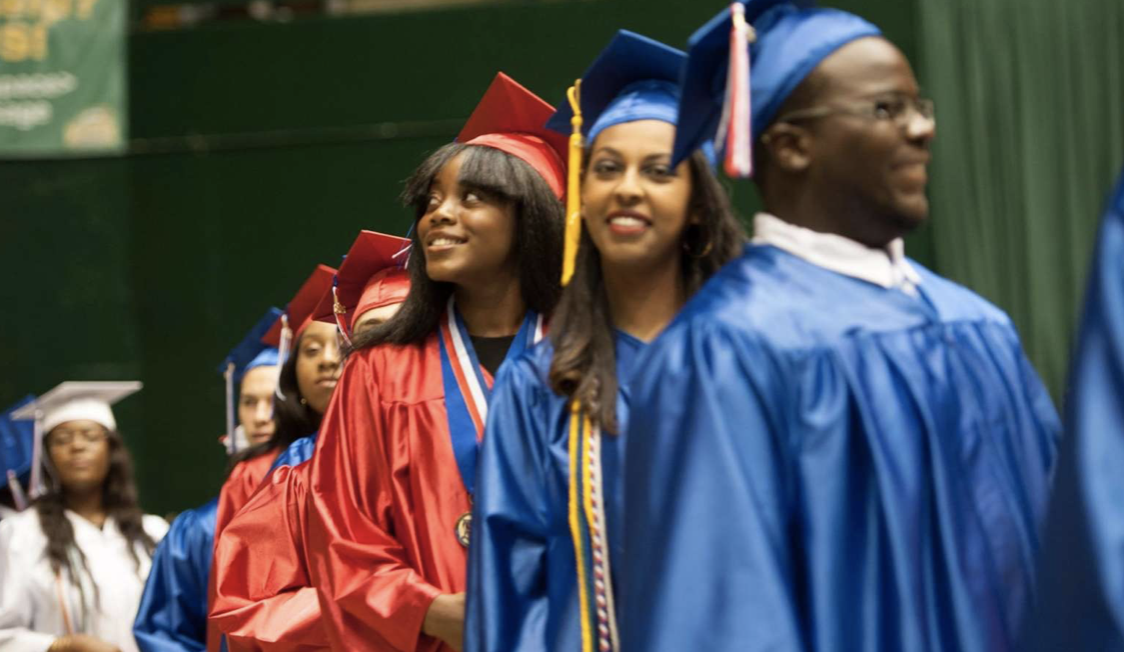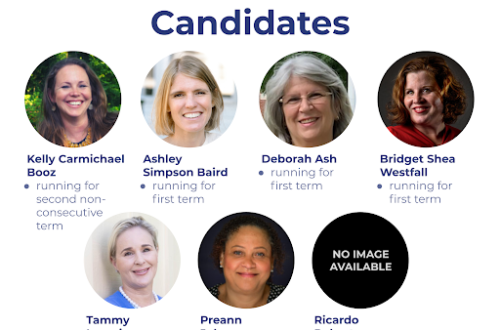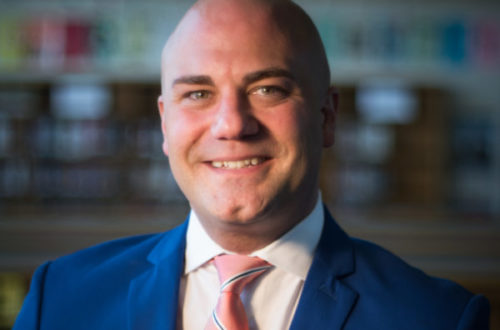The national disparity between male and female enrollment in four-year colleges is nearly as large at ACHS as it is in the United States, but data show that the local gap may be getting smaller.
Nikki Harris
Editor
Data analyzed by Theogony show that the national gender disparities between men and women in four-year college enrollment has had similar manifestations at Alexandria City High School since at least the 2016-2017 school year.
In 2021, 55.3 percent of women and 39.6 percent of men graduating from the high school enrolled in a four-year college. 2017, 2018, 2019, and 2020 showed similar gaps.
Total enrollment in four-year colleges at ACHS has increased by 13.8 percent over the past four years, with 42.1 percent of 2017 graduates and 47.9 percent of 2021 graduates enrolling in one. The pandemic did not have a substantial disruption on college enrollment among ACHS graduates in 2020 or 2021.
While the disparity between the number of female and male graduates enrolling in a four-year college remains sizable, male graduates account for over twice as much of the growth in enrollment as female graduates. The percentage of male ACHS graduates enrolling in a four-year college has grown by 18.6 percent over the past four years. The percentage of female graduates has grown more steadily at 8.9 percent.
The growth in male college enrollment at ACHS has helped close an imbalance that was larger in 2017, when 50.8 percent of female graduates and 33.4 percent of male graduates enrolled in one.
This trend is out of line with that happening nationwide. In the US, the gap between male and female enrollment in college enrollment has grown steadily starker. The country also shows a wider difference than that shown among graduates at ACHS. National Student Clearinghouse reported that at the close of the 2020-2021 school year, women accounted for 59.5 percent of college students, while men accounted for 40.5 percent.
As the national gender gap in higher education has widened, higher education enrollment has overall declined, partly because the student loan debt crisis has made younger Americans question whether the cost of college is worth the investment.
Notable about the data is that the gender gap in four-year college enrollment is more significant among Black and Hispanic graduates than white graduates. 52.6 percent of 2021’s 135 Black female graduates and 33.9 percent of the 121 Black male graduates enrolled in a four-year college, making for a 43.8 percent overall matriculation rate among Black 2021 graduates.
The difference in matriculation among Hispanic graduates closely reflects that of Black graduates. In 2021, 32.5 percent of female Hispanic graduates and 18.6 percent of male Hispanic graduates enrolled in a four-year college.
Among white graduates the gender gap is more marginal: in 2020, 83.3 percent of female graduates and 78.3 percent of male graduates enrolled in a four-year college. The disparity was larger in 2021, during which 83.2 percent of white women and 68.9 percent of white men enrolled in one.
Education experts have said that one reason male enrollment in colleges has declined, a trend that took hold in the mid-1980s, is the high incarceration rates of men, many of whom have male children who lack male figures in their home or neighborhoods. This may be one reason, then, that the gender gap is larger among the Black and Hispanic population, as Black men have the highest incarceration rates in the nation, followed by Hispanic men.
Similarly, women have represented an overwhelming majority of teachers in the American workforce, especially at elementary schools, since the 1880s.
Others have pointed to the omnipresence of video games in boys’ lives as an explanation for why they are lagging behind women not just in college enrollment, but in elementary school and secondary school performance as well.
Sociological and biological factors, too, play a role in the widening gender gap, which is present in nearly every country that offers equal education opportunities to men and women. Boys are more sensitive to early childhood adversity and face behavioral problems like a lack of self-control at a higher rate than girls.
Stacy Morris, the College and Career Center Counselor at ACHS, said that she notices male students tend to ask for help less often and less proactively than female students. She said that a greater investment in school counselors, rather than just college counselors, would be valuable in mitigating the gap.
The differences shown between men and women in four-year college enrollment do not hold in two-year college enrollment. In 2021, approximately 34 percent of both male and female graduates enrolled in a two-year college.
Male ACHS students are much more likely to enroll in the military after high school, as 19 male graduates and 3 female graduates did so in 2021. Military enrollment has remained steady over the past four years at ACHS.
A greater percentage of male ACHS graduates, too, seek employment after high school than women, as 13.6 percent of 2021’s 412 male graduates and 6.5 percent of the 461 female graduates did last year.






